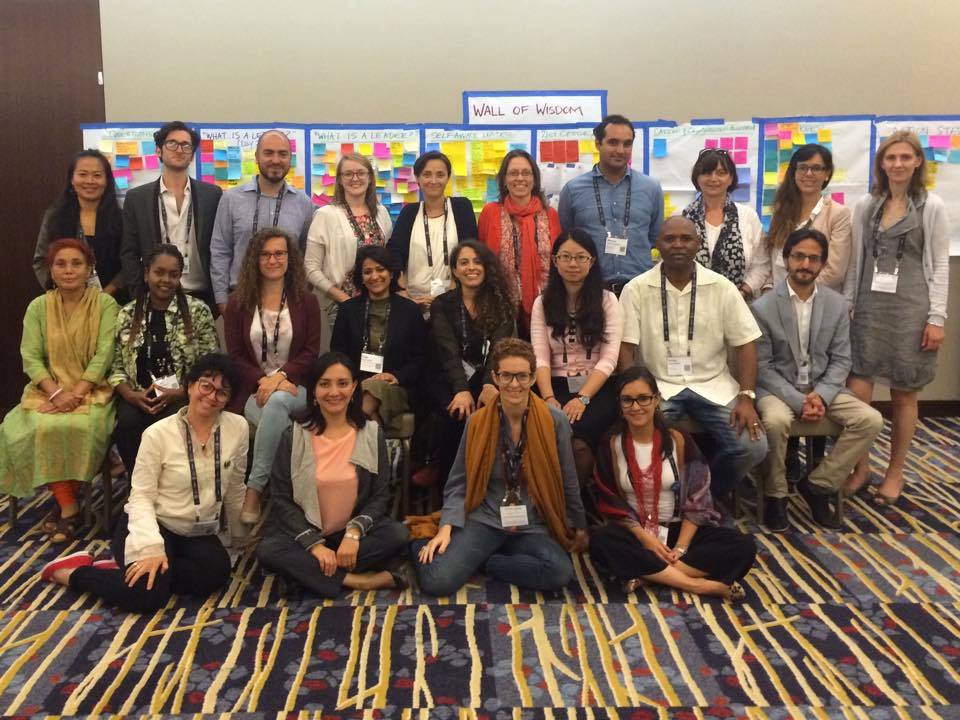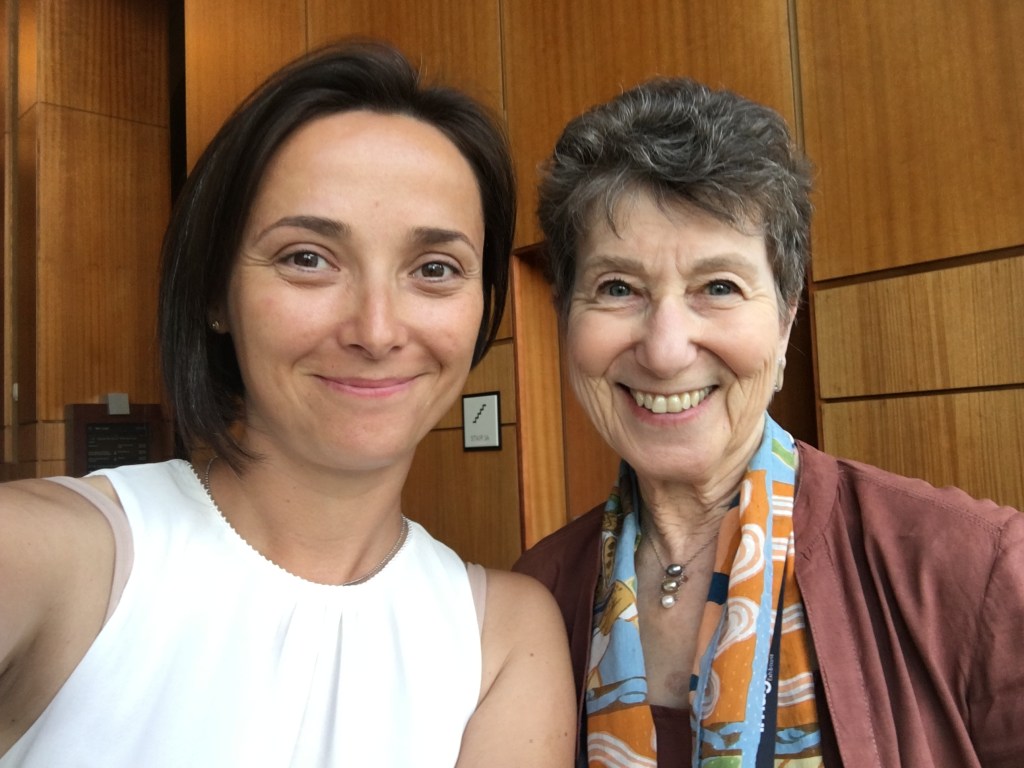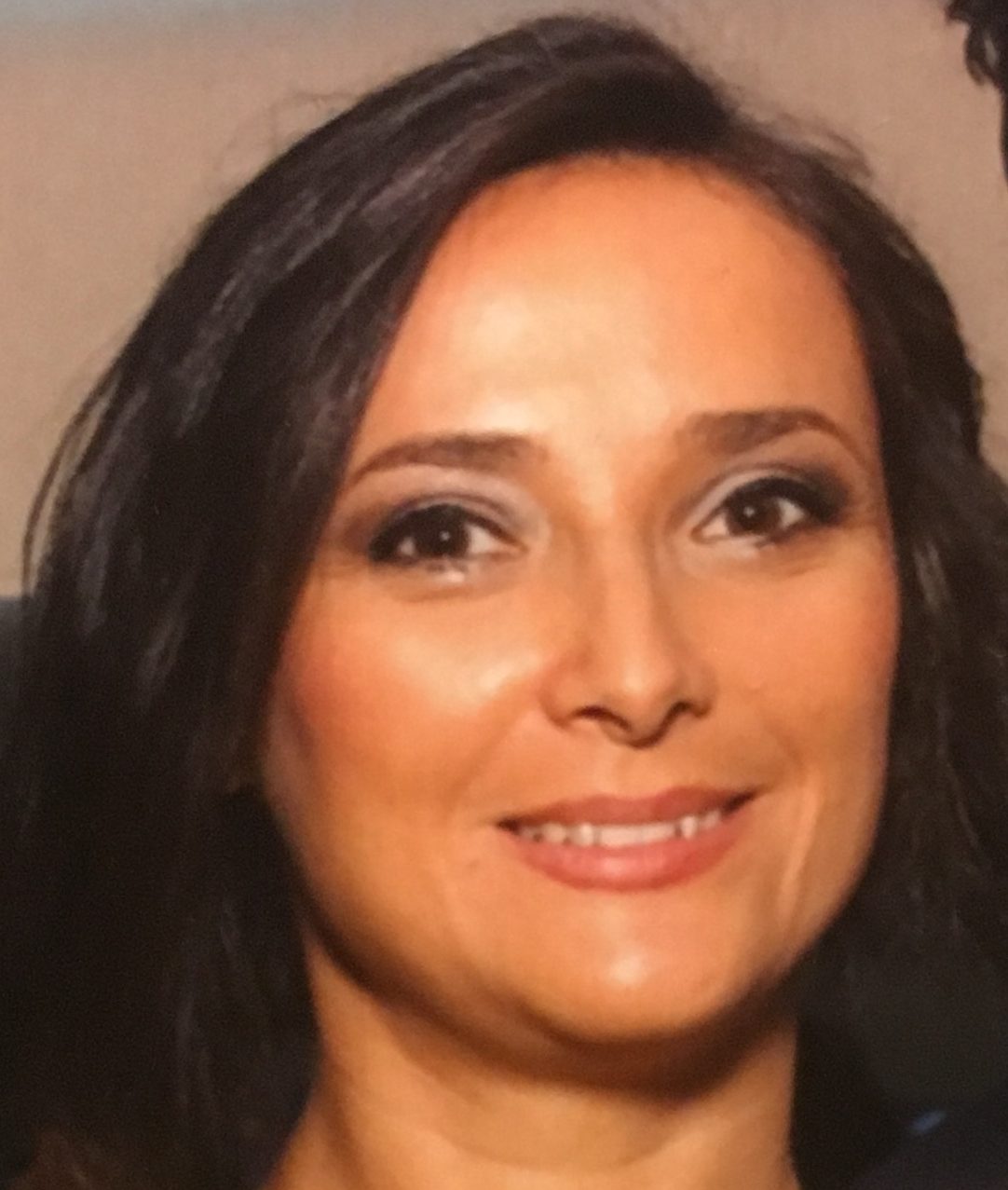
Two years ago, in 2016, I had the opportunity to attend the AAM Annual Meeting in Washington DC, thanks to the Getty Leadership and Career Management Program Fellowship. Little did I know the extent to which that experience was to influence my future career!
At the time I was head of the education department at the most important art museum in Romania: The National Museum of Art of Romania (NMAR) in Bucharest, the country’s capital. In post-communist Romania, the education department at the NMAR was among the first to be founded in 1999. Museum education existed during communist times, but as a field underwent significant changes at that time, transitioning to curriculum-based activities, education projects targeting the needs of a wide variety of audiences, and projects based on visitor studies. The members of the newly-founded department had to work with the public of all ages to document and implement their own events and activities; they participate in conferences and lectures and train in project management. Ten years later the department had become famous among museum specialists around Romania and museum educators at the NMAR were invited to train employees from other museums, to write articles, and to share their experience on museum education.
Thus, since 2004, I was proud to be a member of this great team, working together in our efforts to convince our colleagues and the public that museums are places of continuous learning for everybody, not only the elevated few. By 2016 I was head of the department, in charge of the education strategy of the institution, coordinating a team of nine people, developing and implementing programs and activities that would fulfill the museum’s mission. Busy as I was, I was happy with my work even though I started feeling that the time for moving on to a better position or another institution was slowly coming.
At that time in my career, I had the opportunity to participate in the 2016 AAM Annual Meeting in Washington DC, as a Getty International Fellow. There were many takeaways from that meeting: a full range of new ideas, feelings, experiments and memories of the friends that I made that I took back with me to Romania! The other Getty fellows came from all over the world and our everyday schedule was divided into two consistent parts: sessions designed especially for us where we could meet and work with great museum professionals, and time for attending the general sessions of the conference.
For our group meetings, we received a participation packet that included case studies that were discussed in sessions run by remarkable leaders: Ann Fortescue, Wynona Lynch-McWhite, Nathan Richie, and Marsha Semmel, to name just a few of them. Together we discussed perspectives on museum leadership, museum leadership and 21st-century skills, and how to align leadership style with organizational and career goals. These were enriching sessions, filled with new information and a friendly yet energizing atmosphere that made me understand that I was in the right place at the right time. Two of the takeaways from these sessions? It might be good to be a manager, but it is best to be a leader first and that in order to be a good leader I needed to learn to listen, listen, and then listen more (I am still working on that!). Another important point was the reassuring feeling that I was not alone: I had my new friends who– I was sure—would be there for me if I ever needed professional advice.
The other consistent part of my schedule was attending sessions. I tried to attend as many as possible and learn and share as much as I could. One of the most important ideas from these sessions was understanding that we are not THAT different, that all the museums around the world struggle with the same issues: lack of finances, lack of personnel, conservation and storage issues, etc. Even the tension between museum educators and curators was ubiquitous!
For example, as museum educators do you sometimes have a hard time explaining to curators that label texts or exhibition design might be more relevant to the public if a museum educator were part of the team working for them? So did I and my Getty fellowship friends from India, Argentina, Mexico, and France! Do museum employees working in museums hosted in historic buildings face storage issues? This problem is common to many museums in Europe, the Americas, Asia and all the other continents. What about under budgeting? Or lack of personnel? Museums all over the world share more or less the same issues; the good news is that professional meetings such as the AAM Annual Meeting exist and are there for sharing and learning. It is up to each one of us to take action and improve our professional life and the museums we work in.
At the end of the conference in Washington DC, I felt richer and more confident, I had more information and new friends from the museum field I could rely on. I went home with new ideas and my colleagues were happy to listen to my stories, even though the priorities of the NMAR at the time were different thus putting those new ideas into action had to be postponed.
But what I felt before the meeting in Washington DC, that it was time for me to move on, that I could do more and better was not a feeling anymore, it was now a certainty, one that I was carrying with me every day, everywhere. I felt that staying in the same place, as honored and privileged as I felt to work in one of the best museums in Romania, was to be, in the near future, a burden. And thus I began paying attention to other job opportunities, be them private or state-funded.
The opportunity came three months later when the manager position at a small museum – the National Museum of Maps and Old Books (NMMOB) – in Romania was available. I knew it was a once in a lifetime moment and that I would regret forever not taking it. I wasn’t sure what to do, though, so I decided to ask my professional posse – Romanian and international – about it. Marsha Semmel, head of Semmel Consulting a special person and a great professional wrote to me:
“I think the prospect of moving to a new museum, especially as director, is a wonderful opportunity. And you won’t fail. Don’t even think about it. If you have a vision for making this museum a jewel, I’m confident that you can make it happen. You know the Romanian system; you have creative ideas about what museums can be; you understand the “people’ part of leadership.”

Today I am the manager of a small, unique, and very special museum, and I appreciate (almost) every second of it. Challenges are there every day, at every step. Imagine me, a former curator for education, tackling heating system problems, budgets and international loan contracts; and sometimes even arranging seats for a conference or updating the information on the website! But the thrill of seeing that the museum is more and more appreciated, solving important issues, and leaving them behind and facing other new challenges is priceless. And I am learning new things every day!
Looking back, I wonder how my life would have been without the confidence boost I got at the AAM Annual Meeting in DC, and without the help I get from my friends and mentors working in museums—from Romania and from other parts of the world. Maybe I would be the manager of the NMMOB, but surely I would be less confident in myself and my decisions.
There are similar professional meetings all over the world: the ICOM triennial meeting, NEMO annual meeting, We Are Museums, MuseumNext, the Romanian Museum Meet Museums annual international conference etc. – I find it essential for us as museum professionals to attend as many of them as possible. These conferences contribute to our better understanding of the global and local museum context, indicate the trends and the topics we should all pay attention to. Even though the social, economic, legislative, even political contexts are very different from country to country, those are the meetings that show us where we stand in comparison with other museum professionals, that give us ideas, make us feel accepted and part of a strong community united all over the world through our love for museums and for universal heritage.









Brava! I’m so happy this experience we helped create for you was meaningful!
Greg